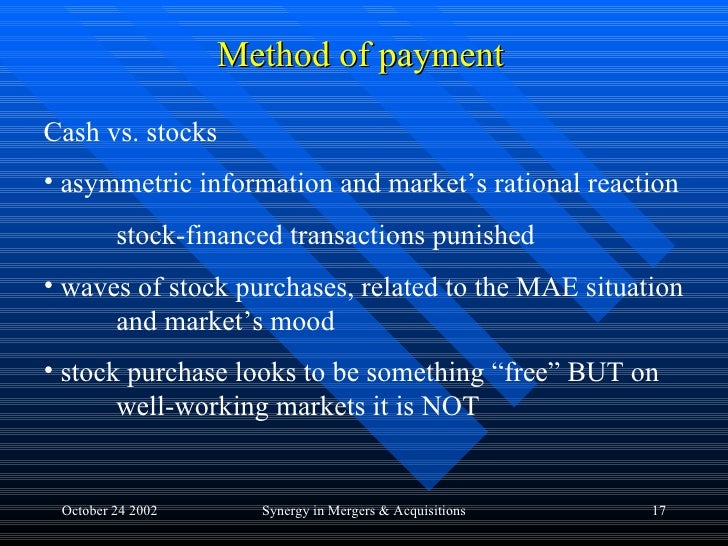

This type of synergy allows the smaller company to use the larger one's equipment to optimise business processes. In such cases, the larger company may have access to technology which the smaller one can't afford. Sometimes, prominent and wealthy companies merge with smaller ones because they have a unique value proposition or control special resources.

Similarly, synergy via a merger can mean neither of the companies pays for access to the other one's patents. This can aid innovative collaboration and help the teams from synergised companies develop better products. Fortunately, synergy grants companies access to each other's patents. When companies make products, it's common to protect them with patents, preventing other companies from stealing the original ideas. For example, a notebook and a pen are complementary products. Complementary products usually require each other to function or provide more value when customers use them together.

This type of synergy can also help save costs like rent and utilities. When two companies sell complementary products, their teams can synergise to attract more customers and generate sales.

As a result, each company can make more sales and generate higher revenue. This type of synergy allows both companies to take advantage of access to each other's market share. Likewise, a company that produces women's clothes can synergise with one that creates male garments. For example, a snack company with a significant market share in Brighton can synergise with a snack company in London. Synergy may occur between two companies that operate in different locations or cater to various aspects of a demographic. Here are some of the types of synergy you can consider when suggesting corporate strategies in the workplace: Complementary customers or location Related: Collaboration skills: definition and examples Types of synergy It can also help if the companies have products or business processes that are complementary to aid collaboration between teams. It's equally important that both companies have shared interests, not competing ones. This is because shared values are essential for productive and long-term alliances. More importantly, it's vital that the teams who make up these companies have similar values or are willing to amend their values to align. Usually, shareholders benefit from the synergy between companies due to its effect on performance and profits.įor companies to synergise, it's crucial they have certain features in common. Beyond this, synergy can also refer to companies combining products or resources to achieve a common goal. Usually, professionals use synergy to describe mergers and acquisitions, two of the most common methods through which two companies become one. It's when two organisations or units combine efforts and resources to create a value worth more than each part. The answer to 'what is synergy?' involves two companies' results while working together, which neither can attain alone. In this article, we discuss synergy, identify synergy types and outline the benefits of synergy. Understanding the answer to 'what is synergy?' can help you suggest more effective corporate strategies at your workplace. In some cases, working together can yield better results due to multiple perspectives and varied expertise. Organisations often engage in competition with each other over market share and profits.


 0 kommentar(er)
0 kommentar(er)
